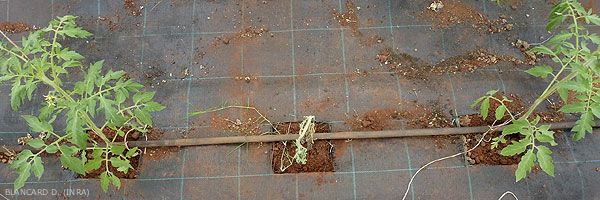
Identify diseases
Identifying a disease is not a trivial act. To achieve this, it is necessary to follow a fairly strict procedure which consists in particular:
- to gather as much information as possible, in particular on the cultural context;
- and to carry out numerous observations in order to specify the parasitic context.
Also, before starting to use one of the 2 identification modules offered, we advise you to consult the section " Diagnostic procedure " which briefly describes the essential approach to adopt.
Now, you can carry out your diagnosis thanks to two complementary modules:
- Guided diagnosis - in this case, you are asked to consult a series of successive menus obliging you to gradually describe what you observe. In the end, several potential causes are proposed to you which should be compared in order to define the one which best corresponds to your phytosanitary problem;
- Image diagnosis - mosaics of images allow you to gradually select those that most closely match what you see on your diseased tomato plant samples. At the end of the assignment, one or more causes are proposed to you as well as all the images which characterize each of these hypotheses. A link allows you to access, for each hypothesis, the Guided Diagnosis module, and to benefit from the additional information available and thus to confirm your diagnosis.
We would like to draw your attention to the fact that the two modules offered have been designed to facilitate your diagnosis and not to carry it out for you. You are therefore responsible for the final identification.





